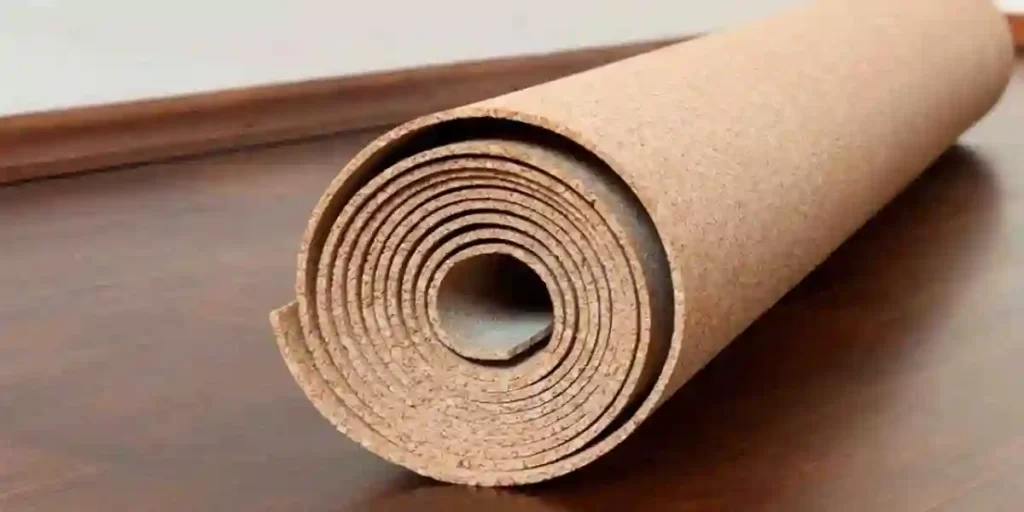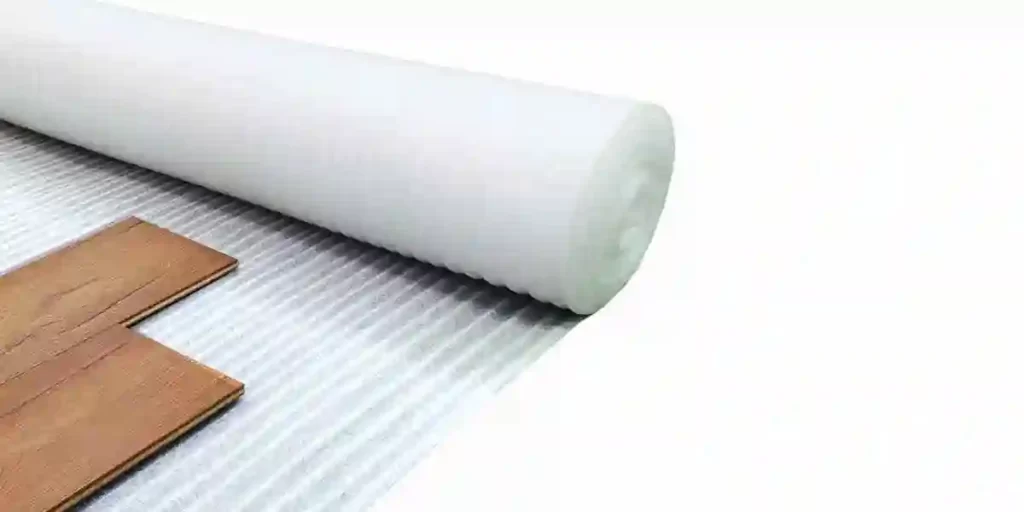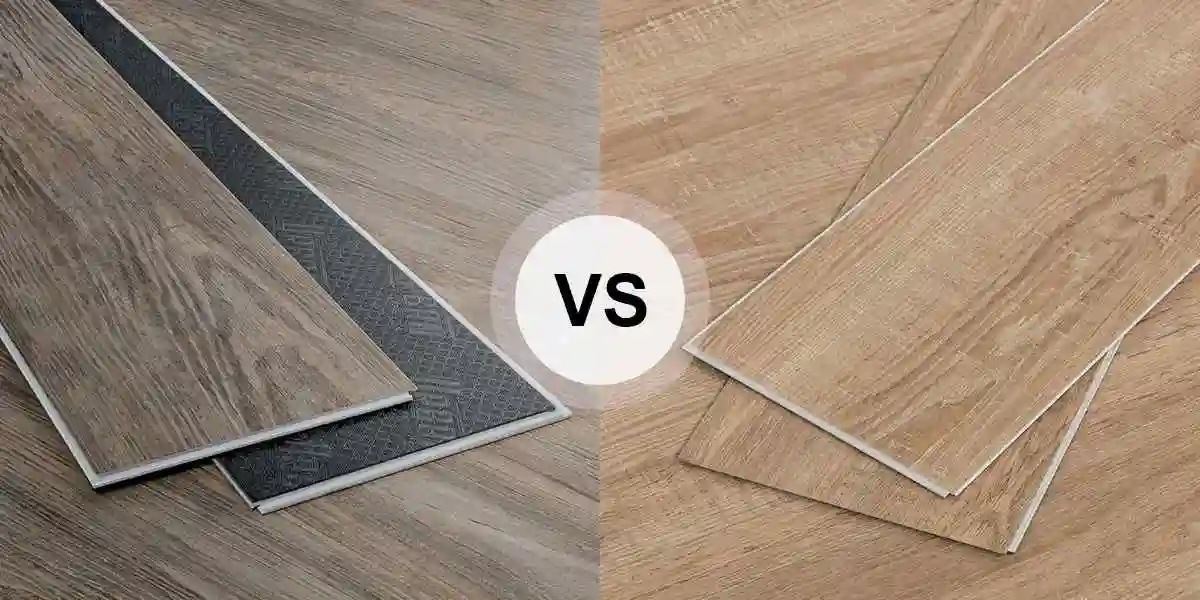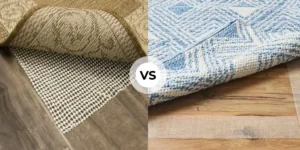Flooring is a key component of any home.
It is one of the first things people notice when they come to your house. And it can affect the overall quality of their experience.
Yet, for a better experience for people and especially for you. Invest in an underlayment before lying on the floor, since you will spend half of your life there.
There are many types of underlayment available on the market.
But the two most popular types are foam and cork underlayment.
Both have their advantages and disadvantages. But finalizing one from either of them is going to be a task.
And one question that might be echoing in your mind by now: Which one is the better pick for my space?
Because, let’s face it, the last thing you want is a squeaky or uncomfortable floor beneath your feet.
But why does this question even pop up?
Well, your floors deserve the best foundation.
And understanding the difference between cork and foam underlayment will lead you to the right decision.
Thus, to make your choice easier here is a detailed comparison of cork vs. foam underlayment. Keep reading for more information.
You Might Also Like:
- Cork vs. Rubber Underlayment: Which One Should I Choose?
- Install Plywood Underlayment for Vinyl Flooring! (D.I.Y Friendly Guide)
Cork vs. Foam Underlayment: Major Differences
Cork Underlayment
Cork underlayment is produced from the bark of an oak tree. And offers many advantages over other types of underlayment materials.
It has a natural springiness, providing a comfy cushion under your feet. It’s like a built-in shock absorber for your floor.
We all know cork for its excellent sound absorption properties. It helps muffle footsteps and reduces noise transmission.
Making it ideal for areas where a bit of peace is appreciated.
On top of that, cork has a natural resistance to moisture. Which is fantastic if you’re dealing with potential dampness issues.
It can be a lifesaver in areas prone to humidity or spills.
Lastly, if you’re leaning towards an environmentally friendly option, cork is a winner.
As it has been harvested from the bark of cork oak trees.
Foam Underlayment
Foam underlayment is a type of underlayment which is designed to reduce noise.
And provides a comfortable walking surface beneath the flooring.
Talking of foam underlayment, it is a great choice if you focus on a plush sensation when you walk.
As it offers a softer feel which makes it less rigid than cork.
Foam underlayment also dampens sound. But it might not be as effective as a cork in handling impact noise.
It’s still a solid choice if you’re looking to keep noise levels down.
Moreover, foam underlayment varies in moisture resistance. While some types offer decent protection against moisture, others might not be as resilient.
It’s essential to check the specific product’s features.
Lastly, foam underlayment may not be as eco-friendly as cork.
Yet, there are options made from recycled materials, so it’s worth exploring the greener side of foam.
Pros and Cons
| Pros | Cons | |
| Cork Underlayment | -Environmentally friendly. -It’s renewable, recyclable, and biodegradable -Absorbs sound better than most underlayments. -A great insulator keeps your floors warm or cool in winter and summer. | -Cork underlayments can be damaged by water. -It is comparatively more expensive than foam. |
| Foam Underlayment | -The most versatile underlayment. -Easy to cut and install. -Resistant to water damage. -It is impervious to moisture and can also be used in humid environments without being affected by mold. -A great shock absorber. | -A furniture or heavy footstep can easily damage the floor. -Installation on uneven surfaces can damage the surface beneath. -Not fire-resistant. |
Recommended Installation Areas
| Installation Areas | Cork | Foam |
| Living Room | Yes | Yes |
| Bedroom | Yes | Maybe |
| Kitchen | No | Yes |
| Dining Room | Yes | Maybe |
| Bathroom | No | Yes |
| Home Office | Yes | Yes |
| Mudroom | No | Yes |
| Guest Room | Yes | Maybe |
| Basement | No | Yes |
| Nursery/Playroom | Maybe | Yes |
| Storage Room | Yes | Maybe |
In the end, whether you go for cork or foam depends on your priorities.
Need a soft landing for your feet? Cork might be your go-to.
Want to keep noise at bay? Foam could be the answer. It’s all about finding the perfect match for your flooring needs.
Questions to Ask Yourself Before Choosing Cork or Foam Underlayment
1. Which room is it, and how will it be used?
To begin with, you need to decide where to install your underlayment.
If you are planning to install it in a kitchen, basement, mudroom, or bathroom.
I recommend choosing foam underlayment so that your flooring doesn’t get wet or warp.
Even though cork underlayment resists water and mold. It can be damaged by prolonged contact with water.
To prevent this, it is better to install foam underlayment.
Also See: 4 Best Ways to Cover Gap Between Floor and Wall (Must-Try!)
2. Does Underlayment Compress?
Many factors contribute to the effectiveness of underlayment. One of these factors is compressibility.
Compressibility is how easily a material can be compressed.
And how much it will spring back to its original shape. Some materials are not very compressible, and others are very compressible.
A compression set test measures how much deformation occurs within a sample.
After being exposed to compressive stress for a set amount of time.
It is then used to determine whether an elastomeric material can keep its elastic properties after being compressed for a long time.
Moreover, in this situation, a cork underlayment wins. Since it is purely made from the bark of an oak tree and does not compress as a foam underlayment.
Because air gets trapped in the foam underlayment. If you squeeze it and hear a popping noise, the air is coming out.
Popping can occur as a result of high traffic or equipment rolling over the underlayment. Once the air is released, it becomes invisible.
3. Does underlayment absorb sound?
It is important to choose an underlayment that can absorb sound. Sound waves bounce off hard surfaces.
To produce new sound waves that are louder than the original sound.
This can sometimes make your house look scary.
In this particular case, both foam and cork underlayment are equally effective at absorbing sound.
As they are both able to absorb sound better than any other underlayment on the market.
4. How easy is it to install?
Ease of installation is another important consideration.
Since foam underlayment comes in large rolls, you can cut it to any size you need and install it.
Whereas, foam underlayment comes with an adhesive strip, so you’ll need to stick it to the subfloor.
Also See: Install Plywood Underlayment for Vinyl Flooring! (D.I.Y Friendly Guide)
5. Budget
It is important to check your budget before any project. How much are you willing to invest in this project?
If you’re tight on funds, foam underlayment may be the best option because it’s cheaper than cork.
First answer these questions to yourself. Then only you will know which underlayment is most appropriate for your home.
Why Cork Underlayment Is Usually Better

Cork underlayment is usually better for a variety of reasons. These reasons include:
- Material
- Eco-friendly
- Noise-Reduction
- Great Insulator
- Cost
Material
Cork is a natural material that is renewable and sustainable. This material is used for underlays.
It provides extra soundproofing, insulation, and fire resistance for floors.
Also, cork can be recycled and reused many times to save the environment.
Eco-friendly
Cork underlayment is made from the bark of cork trees, making it environmentally friendly.
Also, its antimicrobial properties prevent mold and mildew from growing.
Noise-Reduction
The sound-absorbing properties of cork make it a great underlayment material.
There is no better underlayment for absorbing sound than this one.
As with memory foam, cork can be compressed, released, and reshaped.
As a result, it provides a great barrier against sound waves.
Great Insulator
The low thermal conductivity of cork makes it one of the best natural and renewable materials.
It is often used as an underlayment because it is an excellent insulator.
When Foam Underlayment Is Better

Cork underlayment is usually a better choice, but there are times when foam underlayment is a better alternative. The reason is:
- Comfortable to Walk
- Easy to Install
- Water and Heat Resistance
- Durable and Low-Maintenance
- Cost
Comfortable to Walk
Both underlayments are comfortable to walk on. But the foam underlayment is softer than the cork. This makes it even better than the cork.
Easy to Install
Foam underlayment is easier to install than other types of underlayment.
Because of its availability in large square-like pieces that can be cut to any size and installed as needed.
Water and Heat Resistance
Foam underlayments are made of polyurethane or polyisocyanurate foam with a water-resistant coating.
Which makes it great in resisting water and preventing mold. The coating also protects against heat generated by sunlight.
Durable and Low-Maintenance
Foam underlayment provides insulation and soundproofing benefits.
Along with the assurance of a more comfortable surface.
There are many advantages to using this type of underlayment. Because it can be used in any room in the house.
Plus being highly durable, and doesn’t need to be replaced as often.
Too, it does not need much maintenance, making it easy for homeowners to maintain their homes.
Cost
Foam underlayment is also affordable, which is another reason homeowners choose it.
And it is comparatively much cheaper than cork and other underlayments.
Which One Should You Consider?
Cork and foam underlayment both have advantages and disadvantages.
Yet, cork is more durable. Because it does not absorb moisture, it is fire-resistant and does not shrink or deform with temperature changes.
And naturally resistant to insects.
Meanwhile, foam underlayment is inexpensive and easy to install in any part of your home. Including basements and bathrooms.
In summary, if you’re after a cozy, eco-friendly, and noise-absorbent option, cork is your go-to.
If you prefer a soft, plush feel with decent noise control and are mindful of moisture resistance, foam might be the right fit for your flooring needs.
Check Out More Articles Related to Flooring
- [Solved!] Why Your Floor Makes Your Feet Black: For All Kinds of Flooring
- Can you Caulk Around Vinyl Flooring? (All You Need to Know!)
- How to Fix Vinyl Flooring Seams? (A Step By Step Approach)
- How to Fix Gaps in Vinyl Plank Flooring? (5 Easy Steps)
- Does Laminate Flooring Make Your House Colder? (Explained)





